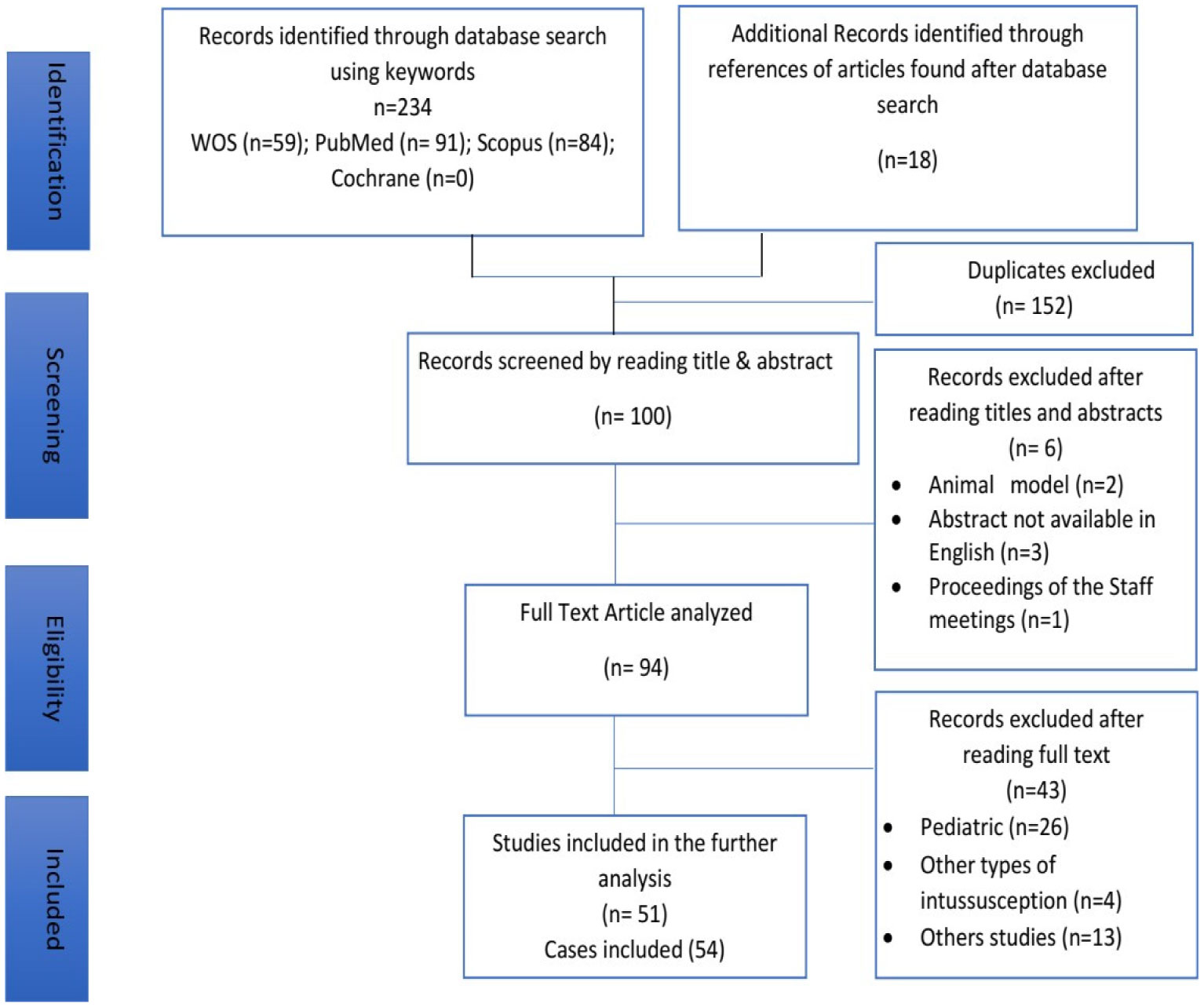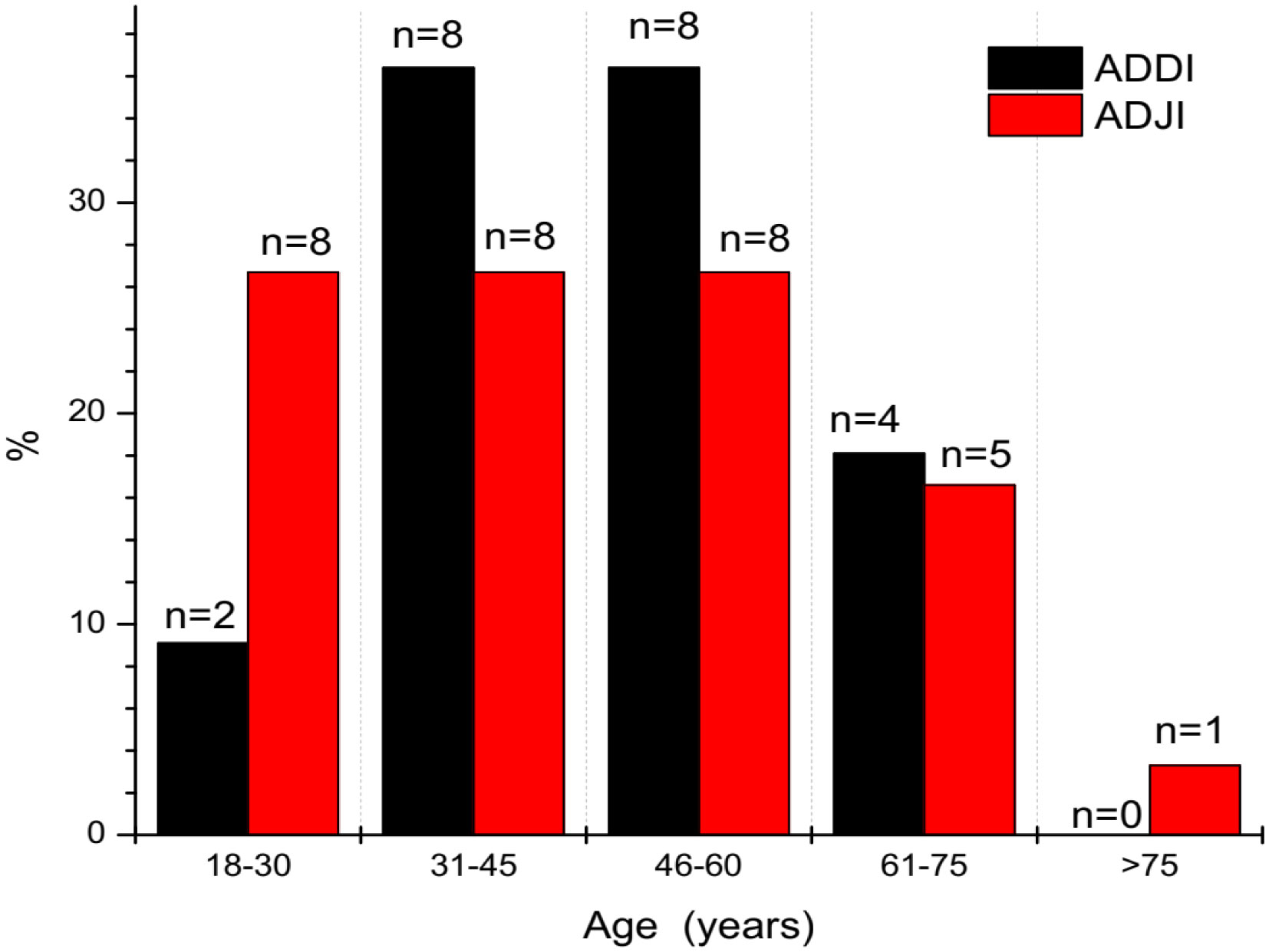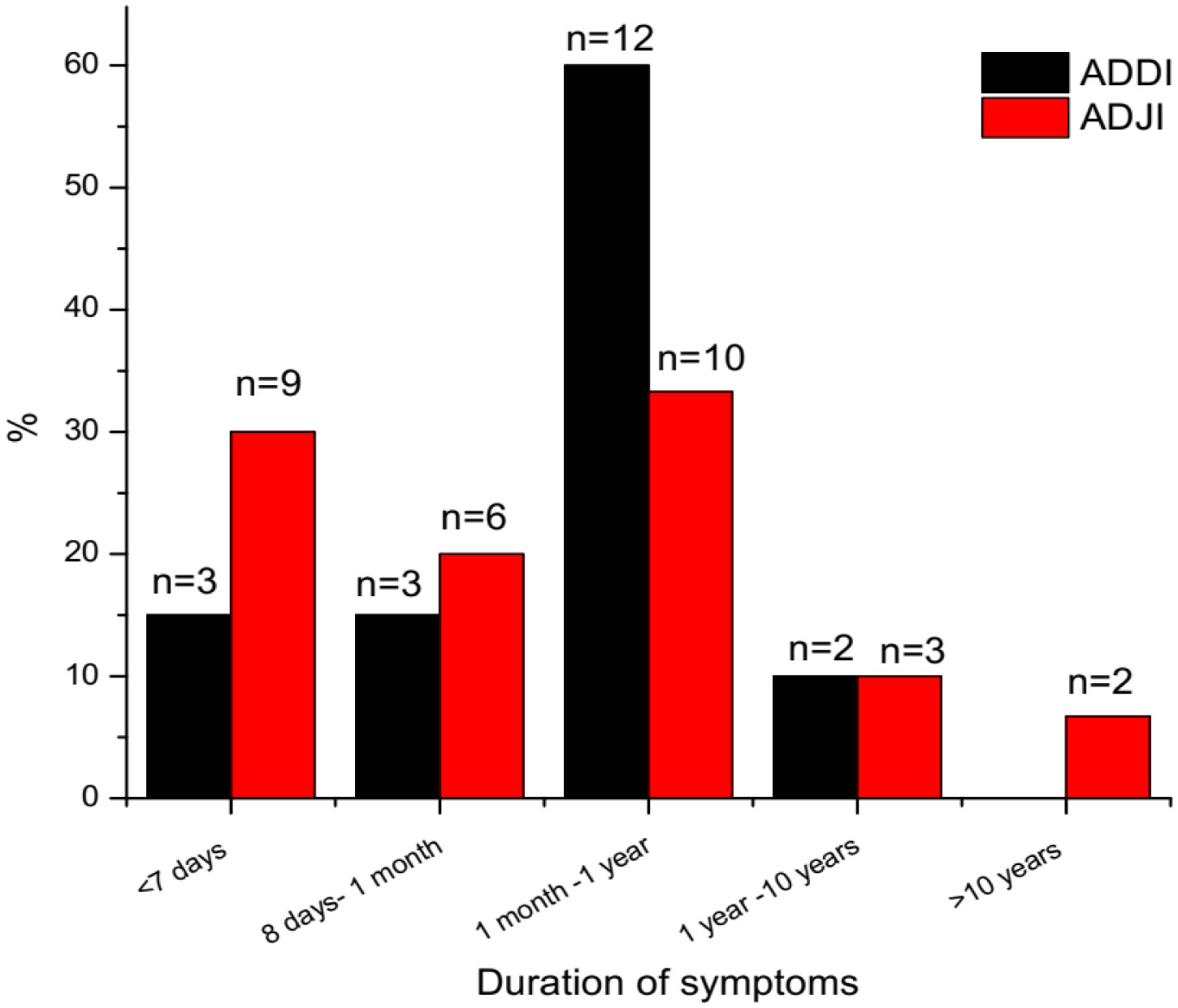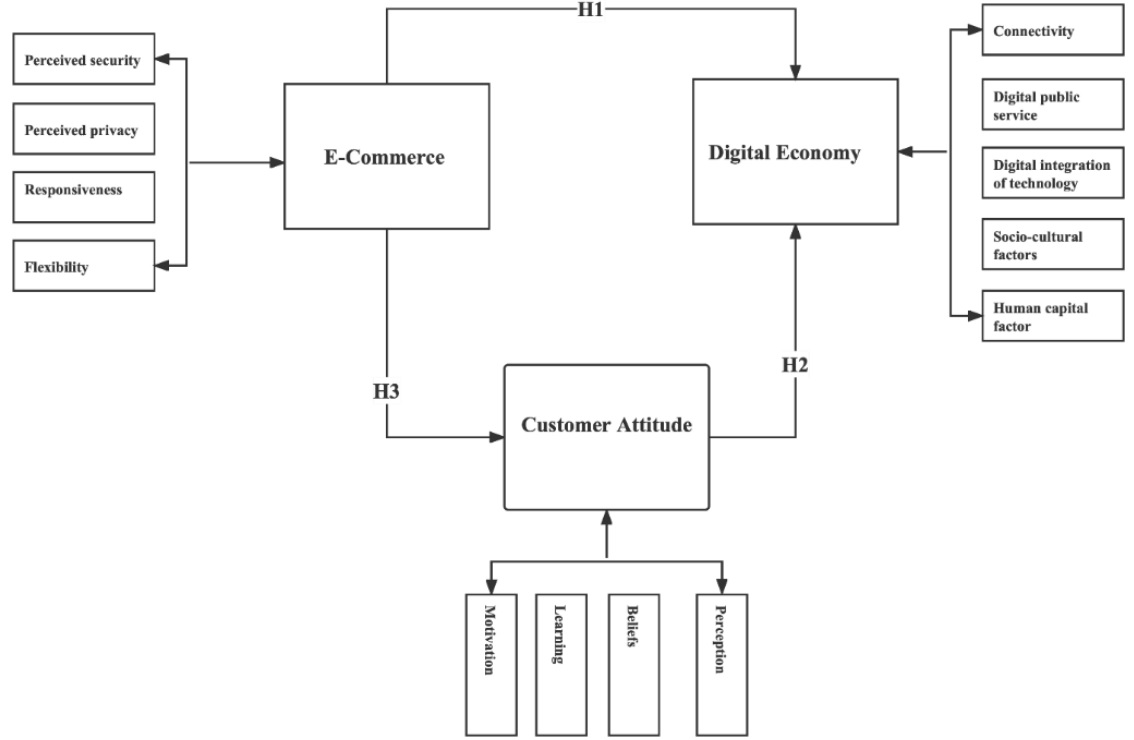1.
Introduction
Intussusception is a potentially life-threatening condition [1]. It is defined as the telescoping of a proximal segment of bowel with its mesenteric fold within the lumen of an adjacent segment [2]. Unlike in the Pediatric population, intussusception in adults is considerably rare. Lead points or diagnostic cues are more frequently observed in Adult Intussusception (AI) and surgical interventions are considerably more common in AI than they are in Paediatric Intussusception (PI).
Intussusceptions can be broadly classified into three types depending on the anatomical location of the intussusception. If the intussusception is confined to the small intestine, it is called enteroenteric; if it involves large bowel it is called colocolonic; intermediate positions can be termed as enterocolonic. The exact mechanisms for intussusception are not fully known, but it is generally believed to be due to alteration in the normal peristaltic pattern within the bowel [3]. Enteric intussusceptions (EI) are the most common types of AI. EI can be further categorized into different subclasses depending on the enteric segments. Duodenal intussusception (DI) is a rare but distinct subclass of EI, which requires a careful diagnostic and surgical consideration due to the anatomical fixity of duodenum [4]. Duodenoduodenal (ADDI) and Duodenojejunal (ADJI) are anatomically distinct and important subtypes of DI [4].
A few reviews are available on AI. Indeed, only one systemic review was found on AI. It covered enteric, ileocolic, and colic intussusceptions in adults [5]. The authors reviewed more than 40 retrospective case studies covering 1229 patients and reported that EI represents 50% of all cases. The review recommended adopting optimal surgical strategy depending on the site of the intussusception. In another important study, Honzo et al. conducted a retrospective review of 44 AI patients, among whom 12 patients had enteric intussusception [6]. The authors questioned the historical notion that AI is a subacute condition with nonspecific symptoms. Their recommendation was to focus on the careful diagnosis of AI and to develop a standard approach of reduction of intussusception in adults. Essentially, in all previous reviews on AI, the classification was restricted to enterocolonic, enteroenteric and colocolonic and information was lacking on specific cases of ADI. In an important study, Chen et al. reviewed DI in the paediatric and adult population and identified distinct etiological and demographic aspects of DI [4]. Their review, however, lacked analysis specific to AI or ADDI and ADJI. With the recent advances in medical diagnosis, it has been argued that the clinical management of the AI should be done with careful consideration to the location [5],[7],[8]. However, details pertaining to patient characteristics, diagnosis and etiology of specific types of AI remain elusive to a large extent. The need to consolidate available information on this rare but critical condition has been increasingly realized [2],[3],[5]–[10].
Considering the low rate of global incidences ADI, prospective studies or even large retrospective studies have practical limitations. A systematic analysis of the available literature, therefore, could be an effective alternate approach to delineate the diagnostic and clinical features of this rare condition. With these considerations, this review has been performed to systematically synthesize the patient characteristics, etiology, associated symptoms, available diagnostic modalities and treatment options in patients with ADI. Additionally, the review also focuses on evaluating differences between demographic and etiological features of DI subclasses (i.e. ADDI and ADJI).
2.
Material and methods
2.1. Literature survey and study selection
Preferred Reporting Items for Systematic Reviews and Meta-Analyses (PRISMA) guidelines were followed in this study [11]. PubMed, Web of Science (WOS), Scopus, and Cochrane Library databases were searched for published literature till May 15, 2020. There were no restrictions on article type or the publication year. For ADJI, the search terms used were (Duodeno-jejunal AND intussusception), (Duodenojejunal AND intussusception), (Duodenojejunal AND telescoping), (Duodeno-jejunal AND telescoping), (Duodenojejunal and Invagination) and (Duodeno-jejunal and Invagination). A similar search strategy was used for ADDI. A list of keywords is provided in Table S1. References from the relevant articles were also screened. As a first step, the title and abstract were screened. If found potentially eligible for inclusion, the full text was read and assessed for inclusion. If the abstract was not available, full text was screened for eligibility in the initial step. The word “adult” was not used in the search strategy. This was done because studies were found to use different age criteria for adults. After analyzing all ADDI and ADJI related papers, those that involved Pediatric populations were excluded. Ethical approval and informed consent were not required for this study.
2.2. Inclusion and exclusion criteria
Inclusion criteria were: age of the study participant ≥18 years and a conclusive diagnosis of ADDI and/or ADJI. No restriction was made on the number of patients treated. In instances where a case was included in multiple studies, only the most recent publication or the one providing complete details on the case was included. All other types of intussusception, except DDI and DJI, were excluded. Full text of manuscripts on Pediatric patients with a clear diagnosis of duodenojejunal intussusception were also read carefully. Paediatric (age <18 years) cases were excluded in the final analysis [12]. Exclusion criteria involved studies in animal models, conference abstracts, meeting reports, and review articles. Studies that did not provide abstract and the full-text was also not available were excluded as well. Cases having less than 75% reporting of required data elements were excluded. Figure 1 represents the selection process of the studies included in the review.
2.3. Data collection and extraction
Data were extracted using a standardized data extraction procedure. Key information collected included the article type, title, authors, year of publication, country where the study was conducted, and study subject related information such as age, sex, symptoms, symptom duration, pre-existing conditions, intussusception type, diagnostic modality, surgical modality used and associated outcomes.
2.4. Completeness of reporting
Assessment of completeness of reporting was based on whether the case report presented sufficient details on specific parameters relevant to this review. These parameters included: ADI type (ADDI or ADJI), gender, age, symptoms, symptom duration, malignancy status, etiology, findings of physical examination and laboratory tests, and the final outcome. Completeness with respect to CARE (CAse REporting) guidelines was not evaluated as the case-reports had different presentation styles and some of them were published before the guidelines were formulated [13].
2.5. Data analysis
Mean with standard deviation or median with interquartile range (IQR) was presented for continuous variables, depending on the nature of distribution i.e. mean for normally distributed variables and median for variables with skewed distribution. Proportions were reported for categorical data. Statistical analysis was conducted with the GNU PSPP statistical software (https://www.gnu.org/software/pspp/) and Excel (Microsoft, Redmond, WA).
3.
Results
3.1. Study screening
The database search produced 234 articles. Of these, 91 articles were obtained from PubMed, 84 articles from Scopus and 59 articles from the WOS search engine (Figure 1). The bibliographic list of articles was examined, and 18 relevant articles were found to fit the inclusion criteria additionally. All articles were put in bibliographic management software and duplicates were removed. A careful manual assessment of the articles was also done to remove any remaining duplicates. Overall, 152 duplicates were found and excluded. Abstract and title of the remaining 100 articles were carefully examined. Review articles, overview articles, proceedings of the staff meetings, abstract not available in English, and animal model studies were excluded. Six articles were excluded based on these criteria. A careful reading of the remaining 96 articles was done. Articles on the differential diagnosis of DI or different types of AIs such as Ileo-ileocolic and Jejunoileal were excluded. 26 cases involved patients less than 18 years old and were therefore excluded. All reported articles were case reports. Two of the reports presented data on more than one patient. None of the cases were presented in two different publications. PRISMA checklist is presented in the Table S2. A total of 51 articles, presenting 54 cases, were included in the final analysis [4],[14]–[63].
3.2. Completeness of reporting
Information on ADI type, diagnosis, malignancy status, etiology, symptoms, and symptom duration was presented in all of the 54 (100%) cases included (Figure 2). PRISMA checklist, for the items applicable in this study, is presented in the Table S2. Details about gender and age were available in 94.4% and 96.3% of cases respectively. Physical examination details were available in 85.2% of cases and findings of the laboratory tests were reported for 77.8% of cases. The median percentage of reported elements in included case reports was 99% (range: 77.8–100%).
3.3. Age
The median (IQR) age of the patients was 44.5 (26) years (Table 1). The youngest patient was 19 years old and the oldest one was 91 years old. The cases were further stratified into different age groups at an interval of 15 years. This analysis revealed that 42 patients were less than 60 years old. Those in 61 to 75 years age group represented 17.3% of the total patients whereas the representation of the 18–30 years age group was 19.2%.
3.4. Historic and global distribution of cases
The reporting of cases on ADI have increased in the last few decades (Figure S1). Around 50% of all cases were found to be reported in the last two decades. Cases were reported from 17 different countries and the highest number of cases (n = 15) were from India, followed by USA (n = 5), Japan (n = 5) and Turkey (n = 4). Nine cases in total, three from each country, were reported from China, Malaysia and UK (Figure S2).
3.5. Sex
Out of all the reported cases of ADI, 66.7% were women (Table 1). The median (IQR) age was 42.0 (28) and 50.5 (26.2) years for men and women respectively.
3.6. Etiologies/pre-existing conditions
All, but one case, had a well-defined lead point and etiology. Malignant cases were observed only in 7 (12.5%) of the ADI patients (Table 2). Three patients showed adenocarcinoma (n = 3), two patients had neuroendocrine carcinoma/carcinoid tumor (n = 2) and one had a gastrointestinal stromal tumor (n = 1). Brunner's gland adenoma was noted in 14 patients and other types of adenomas were observed in 13 patients. Peutz-Jeghers syndrome was observed in 8 patients and most of these patients had hamartomatous polyp as a lead point. H. Pylori infection was noted in 2 patients. Duplication cyst was observed in two patients and one patient had internal duodenal duplication.
3.7. Preoperative diagnostic modalities
A combination of techniques was used to arrive at a confirmatory diagnosis in most of the studies. In 44 (81.5%) patients, a CT scan was used as a diagnostic modality. Laparotomy was used for confirmatory diagnosis in 6 (11.1%) and barium examination in 11 (20.4%) cases (Table 1). Endoscopic examination was used in 36 (66.7%) and MRI in 3 (5.5%) cases.
3.8. Symptoms and duration of symptoms before admission
The most common reported symptom was abdominal pain (n = 41), followed by vomiting (n = 39), weight loss (n = 22) and melena (n = 17) (Table 3). There was a wide range of the duration of symptoms (i.e. presentation to admission) (Table 1). The duration of symptoms ranged from 12 hours to 30 years. Around one-fourth (24%) of the patients had symptoms a week prior to the admission. Nearly one-fifth (18%) had a symptomatic period of >1 week and ≤1 month from the time of admission. Seven patients (14%) had symptoms for more than a year. None of the included cases was asymptomatic.
3.9. Physical and laboratory examination
Abdominal distention was noted in 12 patients. A palpable mass was observed in 5 and pallor was observed in 9 patients. In 8 patients, physical examination was found unremarkable. These symptoms were not exclusive, and more than one symptom was noticed among patients. The data was not sufficient to determine any particular set or combination of observations specific to ADI. The laboratory examination was normal for 17 patients. Anemia, represented by low hemoglobin was reported in 13 patients (Table 4). Five patients had pancreatitis and three had cholestasis/hepatitis.
3.10. Surgery
Operative details were successfully extracted for 49 patients. In two cases with peptic/duodenal ulcer disase/H.pylori etiology, management was done using eradication therapy. Surgical interventions were used in all other cases. As part of the surgical intervention, local excision with anastomosis was used in 19 patients and a more intensive surgical approach involving duodenal resection was used in 28 patients. Operative details for 5 of the patients were not available or incomplete. Double balloon enteroscopy and polypectomy was used in one case and in another case, endoscopic electrosurgical snare polypectomy was used.
3.11. Complications and outcome
One study reported surgical site infection. There were no complications reported in any other study. The malignant cases were recommended for appropriate subsequent treatment and one patient with malignancy died. No major morbidity or mortality was reported as a result of surgery. Follow-up of details were not provided in most of the case reports.
3.12. ADI subgroups: ADDI and ADJI
3.12.1. Sex
The data were available for 51 (94.4%) patients. Incidence of both ADDI and ADJI were higher in women. Out of the total 22 cases of ADDI, 12 (54.6%) were in women, and among 27 cases of ADJI, 66.7% were in women. The median (IQR) age of women and men with ADDI was 49.0 (22.5) and 43 (27.5) years respectively. The median (IQR) age of women and men with ADJI was 51.0 (33.0) and 35 (39.0) years respectively. In both the groups, men were relatively younger than their female counterparts (Figure 3).
3.12.2. Age
The median (IQR) age of patients with ADDI and ADJI was 46 (50) and 35 (34.5) years respectively. The distribution of the incidence of ADDI and AJDI in different age subetaoups is presented in Figure 4. Except for the age group 18–30 years, wherein the incidence of ADJI was higher than ADDI all other subetaoups had similar incidence of ADDI and ADJI. In the age group >75 years, there was only one patient with ADJI (Figure 4).
3.12.3. Etiology and symptom duration
The incidence of adenomas was similar in ADDI and ADJI groups. Polyps were seen only in patients with ADJI. Out of 7 cases of malignancies, 6 were observed in ADJI. The observed cases of peptic/duodenal ulcer disease/H. Pylori infection were in ADDI patients. Incidence of duplication cyst, lipoma, and leiomyoma was similar in ADDI and ADJI subetaoups. One patient with idiopathic etiology belonged to the ADDI group. Due to the lower number of patients in subetaoups, statistical significance for difference in incidence was not attempted (Table 2). The median duration (IQR) of symptoms in patients with ADDI and ADJI was 46.0 (50) and 35.0 (91) days respectively. Figure 5 presents the incidence of ADDI and ADJI as function of the duration of symptoms. Majority of the patients with ADDI had symptoms between one month and a year prior to admission. In those with symptoms arising within 7 days prior to admission, majority had ADJI.
4.
Discussion
Intussusception is a condition wherein one segment of an organ slips inside another segment [64]. The term is more commonly used in context with invagination or telescoping of the intestine. In the Pediatric population, intussusception has received a significant research interest and a great deal of information is available on it. However, not much information is available on AI. Notably, the presentation, prevalence, diagnosis, and management of AI is considerably different from that in the Pediatric age group. To the best of our knowledge, only one systematic review on AI has been published till date. This review has identified important aspects of enteric, ileocolic, and colic intussusceptions [5]. There is no systematic review of ADI and case reports are the only available resources on this rare, yet important condition. This study presents a systematic review of 54 cases of ADI reported in the literature. It revealed a preponderance of ADI in women. Indeed, the number of women with ADI was more than double than those in men, representing almost 67% of total cases of ADI. In their study, Honjo et al. mentioned the male/female ratio of 1:5 for AI, but there was no specific information on EI or ADI [6],[64],[65]. In the systematic review by Hong et al., gender-specific information was not reported [5].
Gupta et al. reported male to female ratio as 1:2.4, corroborating the high incidence of ADI in women reported in the current review [66]. Our study also revealed that a large number of studies (81.5%) used CT scan for diagnosis. Most of the studies, however, employed multiple diagnostic modalities to reach a confirmatory diagnosis. These results are important because AI is traditionally thought to be discovered only during exploratory surgery [6],[67]. Recent advancements in CT technology might help to differentiate intussusception from other abdominal emergencies [5],[8]. Honjo et al. also reported that CT scan is a more accurate preoperative diagnostic modality for AI than ultrasonography and barium enema.[6] In a report by Azar and Berger, 78% of patients were found to be accurately diagnosed by abdominal CT [12]. Our study supports that CT is the most explored diagnostic tool for the examination for AI. However, since surgical interventions were used in most of the cases with ADI, laparotomy was still used in several of the studies to confirm the CT findings. There are only few studies that employed exploratory laparotomy for the diagnosis of ADI [31],[46]. In our analysis, CT scan and laparotomy examination resulted in a cumulative diagnosis rate of 92.6%. Gastrointestinal endoscopy, abdominal ultrasonography, and barium examination were also used for diagnosis; however, they were rarely found to be criteria for confirming ADI. It is also important to note that in PI, ultrasonography is considered a primary imaging modality and has been reported to have high sensitivity and specificity [68]. In AI, however, the role of ultrasonography in clinical decision making, particularly for ADI is somewhat limited. Only in three cases, MRI was used for the confirmation of ADI. Further research on enhancing the role of CT in confirmatory diagnosis of ADI and in the planning of surgical management should be conducted. Considering the non-specific symptoms in ADI, it is also important to have a high degree of suspicion. In the ADI patients included in this work, surgery was used in almost all cases. The two cases which were managed non-surgically were of Helicobacter pylori infection [50],[61]. One case report was identified wherein double-balloon enteroscopy was used [41]. Duodenal resection was the most frequently used surgical approach followed by local excision with anastomosis. In AI, intensiveness of surgical choice is governed by viability of affected bowel and suspicion of malignancy [5],[12],[66]. It may be noted that presence of AI necessitates laparotomy rather than hydrostatic reduction due to the underlying etiology. Furthermore, as stated above, controversy remains as to whether manual reduction of the intussuscepting lesion should be attempted at operation. The anatomical location involved in ADI adds to the complexity of the surgical decision-making process. However, since the incidence of malignancy is low in ADI, surgical choices that are based on the reduction before the operation may be more practical in ADI compared to other types of AIs that have higher incidence of malignancy, especially given the higher morbidity of duodenal/pancreaticoduodenal resection compared to segmental enterectomy/colectomy for other types of EI/AI. A comprehensive synthesis of data to provide reliable indication for appropriateness of surgical management such as lead point, location, and preoperative diagnosis is needed and should be a subject of future studies on ADI. Symptoms of AI are often non-specific and episodic [10],[65],[66].
This study also confirms this conclusion. The triad of symptoms that are commonly observed in PI [69] was not observed in ADI. Most of the affected adults had pre-diagnosis symptoms. The most common symptoms included abdominal pain (57%) and vomiting (48%). Symptoms occurring within 7 days prior to admission had been reported in 24% of patients. In two cases, the symptoms were reported to exist for the past 30 years [21],[22] and more than 10% of patients had symptoms for more than 10 years.
Notably, in more than half of the cases (58%), the symptoms were manifested (onset to presentation) after one month. There was no difference in the nature and duration of symptoms in patients with benign lesions compared with those with malignant lesions. In a review of Pediatric and adult DI patients, Chen et al. reported symptoms within less than 7 days only in 4 out of 48 patients [4]. This corroborates the fact that acute symptoms are not common in DI. In the study by Chen et al., abdominal pain was the most common symptom and tenderness was the most commonly observed sign. These findings also favourably compare with ours. Since in several patients the pain was periodic and intermittent nature and the physical examination was not remarkable, the diagnosis of ADI is expected to remain elusive. Therefore, it is important to maintain a high degree of suspicion. In the included studies, one of the cases reported was idiopathic [59] and 12.5% showed malignant lesions. Among the cases of malignancy, adenocarcinoma was reported in 3 of the five cases. This is in contrast to colocolonic intussusception wherein a malignant tumor is reported to be the etiology in 90.0% of the cases [6]. Chen et al. reviewed DI in the adult and pediatric population [4]. They reported 8 malignant and 35 benign cases. These results are quite close to our results. In ADDI, only one case of malignancy was noted. The remaining six cases with malignancy had ADJI. This finding is important from a surgical management standpoint. As the incidence of malignancy is only 12.5%, reduction in intussusception before final surgery might be a better approach in patients with ADI.
It may be noted that the traditional view i.e. resection without reduction is advocated, whenever possible, for all types of intussusception in adults [3]. About 25% of ADI patients had Brunner's gland adenoma and other types of adenomas were also observed in 12 patients. There was no difference between ADDI and ADJI in terms of incidence of adenoma. Peutz-Jeghers syndrome (PJS) was observed in about 15% of patients and none of them had ADDI. PJS is a rarely observed autosomal disorder. It is often reported to be associated with hamartomatous polyps. Polyps were, therefore, the specific lead points in all cases of PJS. Though AI is considered recurrent, the recurrence of ADI was not reported in any of the included studies. A pooled recurrence rate of less than 7% was reported in a systematic review by Hong et al. [5]. However, the analysis was based on only eight case studies and included all types of AIs. Recurrences of ADI, therefore, need to be subjected to further investigations.
There was only one incidence of postoperative morbidity which was surgical site infection [62]. The study did not elaborate on the cause(s) of surgical site infection. Morbidity has been reported to be low in ADI but still it is advisable to follow the best practices for perioperative diagnosis and surgery. There was no case of mortality associated with the surgical management of ADI, neither in malignant nor benign cases. Historical analysis of the observed cases showed that about 50% of cases were reported in the last two decades. This might be due to the advancements in the diagnostic modalities or due to the natural increase in the number of case reports published in recent decades. This suggests the possibility of an increased number of case reports in this area in the coming years, thereby, allowing the effective synthesis of data and robust statistical analysis.
5.
Limitations
This review had its own set of limitations and therefore the conclusions of this review should be interpreted in the light of these limitations. First, the review is based on case-reports which are generally considered to provide low levels of evidence. However, in rare conditions such as ADI, these types of articles are useful or perhaps the only source of information that can be utilized to frame diagnostic and clinical management strategies [70]. Second, the case-report had different presentation styles and some of them were published before the CARE guidelines were formulated [13]. Nonetheless, completeness of information was assessed against pre-defined parameters. Most of the studies (>90%) provided all desired information for this systematic review. Furthermore, though the author took utmost care to maintain high accuracy during the data extraction and compilation, some errors might be anticipated. The author has repeated the data extraction multiple times to assure high accuracy. Furthermore, the availability or reporting of case reports might be more in the recent period; therefore, it is not fully valid to draw any historical trend regarding changes in diagnosis and surgical practices.
6.
Conclusions
In this study, all reported cases of ADDI and ADJI were systematically reviewed for different parameters related to patient characteristics, demographics, etiology, common symptoms, and diagnosis. Incidence of ADI were reportedly higher in women. A large number of studies used CT scan for the diagnosis of ADI. Malignant lesions were observed in a few patients and Brunner's gland adenoma was a frequent etiology. Peutz–Jeghers Syndrome was observed in some of the ADI patients, and all cases were reported in those with ADJI. None of the cases studied reported a major complication or mortality. The findings of the current review might be useful as a resource for surgeons to understand the clinical features of this critical condition. This study may also be useful in catalysing further research on around this important, yet relatively unfocussed condition.










 DownLoad:
DownLoad:








